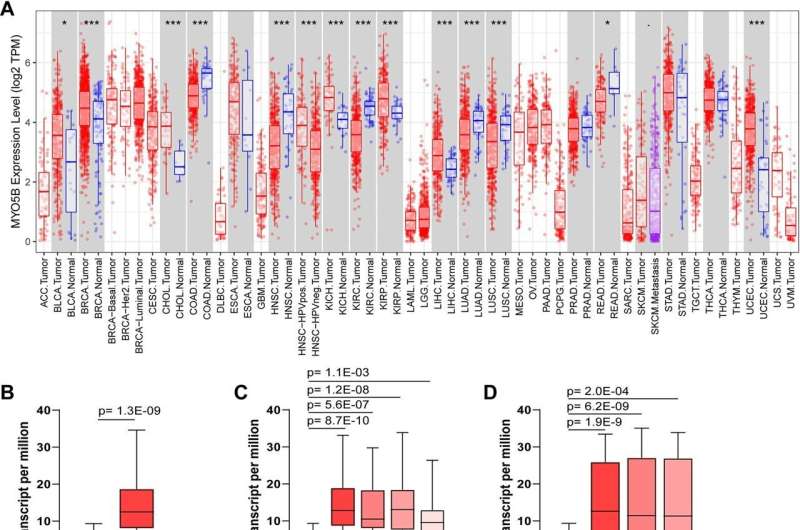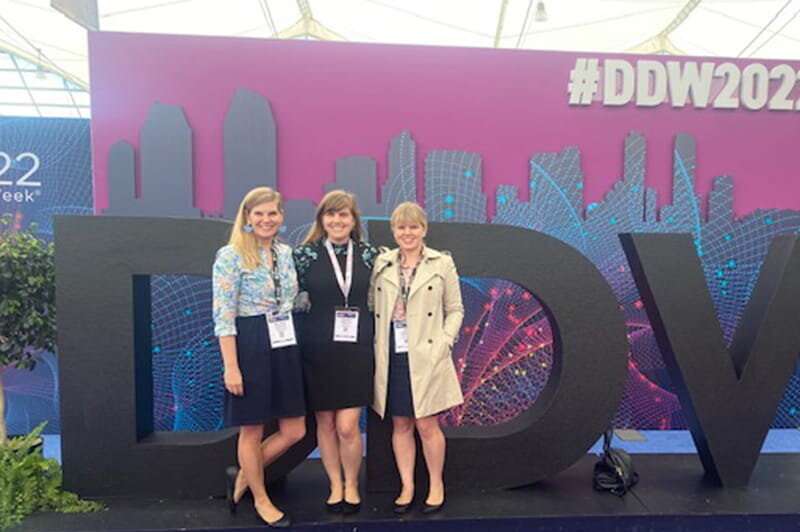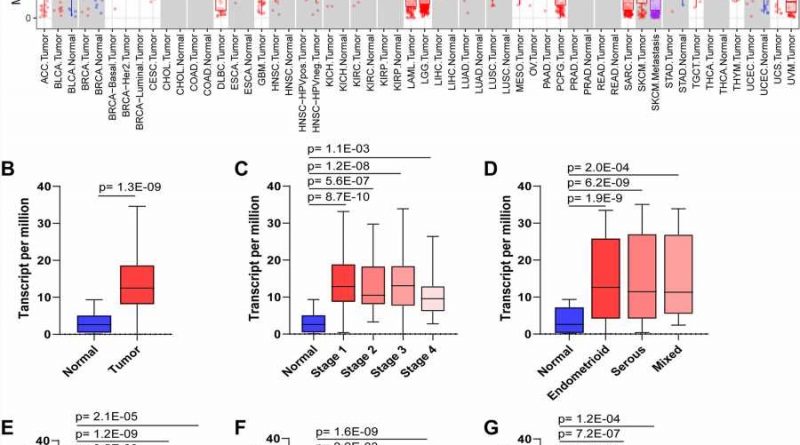Team of sister scientists identify a possible genetic culprit for uterine corpus endometrial cancer

A team of sister scientists is on a mission to find a cure for one of the most common cancers, uterine corpus endometrial cancer (UCEC). UCEC, the fourth deadliest cancer in women, is often not detected until it is already advanced, and it often comes back.
MUSC Hollings Cancer Center researchers Amy Engevik, Ph.D., and Mindy Engevik, Ph.D., working with their sister Kristen Engevik, Ph.D., of Baylor College of Medicine, have identified a possible genetic driver of this cancer subtype. They report their findings in PLoS One.
The Engevik team discovered that the molecular motor Myo5b was increased in UCEC by looking at genetic data across a variety of tumor types and healthy samples from over a dozen publicly available databases.
The Engeviks have a personal interest in looking into cancer-causing genes, as their mother was diagnosed with breast cancer this past year. With this inspiration, they dove into this new realm of research and are ready to take what they learned from these clinical databases and test potential treatments at the bench.
Although all are gastrointestinal (GI) and not cancer researchers by trade, the three sisters are skilled at analyzing bioinformatics data. Bioinformatics involves taking large amounts of data about genes, proteins and their modifications and processing it computationally so that researchers can identify differences between healthy and diseased samples.
By identifying these differences, researchers can home in on drivers of disease. They can then try to develop new therapeutics that block some of these genetic drivers’ functions. When one of their top hits happened to be a gene of interest in a congenital GI disease studied in Amy Engevik’s lab, the sisters quickly shifted their focus to a disease outside of their typical scope.
“For me, it is interesting to see different and unique functions of Myo5b in other tissues and in different disease pathologies. Understanding the role of Myo5b in cancer is a great challenge and an exciting new avenue of research for my lab,” said Amy Engevik.

The Engevik team observed that UCEC samples had high levels of Myo5B, which is involved in transporting cargo to the membrane of cells. Mindy Engevik thinks she might know why.
“We’re speculating that Myo5b traffics transporters that are responsible for absorbing nutrients to the surface of the UCEC cancer cells,” she said.
Using an analogy coined by Sarah Dooley, a graduate student in Amy Engevik’s lab, Mindy Engevik likened Myo5b to having an Uber Eats driver in the cell: It delivers a variety of food or cargo to the static tumor, further promoting its growth. The more drivers around to deliver food to the cancer, the better it will grow. The Engeviks hope that existing drugs that block Myo5b could be used to reduce the number of these drivers. That would slow nutrient delivery to the tumor, in essence starving it.
“Myo5b could be a novel target in UCEC and has the potential to provide beneficial outcomes for existing therapies like chemotherapy and radiation,” said Amy Engevik.
Moving forward, the Engeviks plan to confirm the increases in Myo5b they observed in the clinical data in uterine cancer cell lines. Once the same genetic changes noted in the clinical samples are confirmed in these cells, they can be used as a platform to test new drugs that could block the cancer’s growth.
The work highlights the power of bioinformatics and the way existing data sets can be used to identify new therapeutic targets.
“I think that these publicly available databases are an incredible gift for us as researchers,” said Mindy Engevik. “They allow us to query thousands of patients. It’s a great resource for me to be able to identify factors that are prevalent in patients and use it to drive translational approaches.”
More information:
Kristen A. Engevik et al, Bioinformatics reveal elevated levels of Myosin Vb in uterine corpus endometrial carcinoma patients which correlates to increased cell metabolism and poor prognosis, PLOS ONE (2023). DOI: 10.1371/journal.pone.0280428
Journal information:
PLoS ONE
Source: Read Full Article



